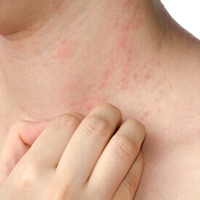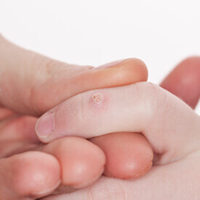About Keratoses
Keratosis are common, noncancerous skin growths. Although it has an unbecoming look, keratoses are not dangerous. These skin growths differ in color, appear oblong-shaped, and raised so they tend to mimic the scaly appearance of a wart or mole. They may appear anywhere on your body but typically appear on the back, shoulders, or chest. Keratosis are not contagious and are common in middle-aged adults. Commonly, patients have numerous skin growths. The sizes of the Keratosis vary from tiny to moderate. It's possible to get basal cell carcinoma and keratoses in the same location on your body. Because of this, we strongly recommend scheduling a professional skin care evaluation. Dr. Catherine Papasakelariou at Houston Premier Dermatology in Houston, TX will provide a thorough skin exam and treatment options to reduce or remove the growths.
Keratosis Reviews
Keratosi Causes
The primary cause of keratoses is unknown. In most patients, irritation may occur due to its elevated nature, but generally, it doesn't itch or cause discomfort. When wearing tight clothes, this may worsen the condition so try to avoid clothes that rub against the raised skin lesions. Accidently scratching, scraping, or puncturing keratoses can feel uncomfortable and may cause it to bleed. In most cases, the keratosis appear somewhat elevated, but they can also look and feel flat. The pigment of keratoses varies from black, brown, tan, yellow, or white. The texture of these skin lesions also vary from rough to scab-like or may have a scaly texture.
Keratosis Symptoms
A seborrheic keratosis usually looks like a wart-like lesion. Seborrheic keratosis most commonly grows on the face, chest, shoulders, or the back of your body. You may develop just one lesion or a cluster. A seborrheic keratosis can:
- vary in color, from light tan to brown or black, and vary in size, from quite small to greater than one inch (2.5 centimeters) across
- look round or oval
- feature a characteristic "pasted on" look
- appear flush with the skin or slightly elevated with a scaly surface
- feel itchy
Keratosis aren't typically very painful, but they might become a nuisance, depending on their location and size. Take care to not scratch, pick at, or rub them. This can result in swelling, bleeding, and in some cases, an infection.
Treatment Options
Based on the extent of your skin condition, we can remove Keratosis with laser therapy, freezing, electric therapy, or scraping. Cryosurgery is used to freeze lesions with liquid nitrogen and is usually quite powerful. Electric therapy (or electrocautery) attacks the lesions through electrical currents. Women and men with lighter or flat growths are advised to have the lesions removed through curettage or scraping. After removing the Keratosis, your skin might look a little discolored, but this generally dissipates over time, especially with proper wound care. Even after the removal of the original growths, the reoccurrence of Keratosis is still possible.

Receive a Detailed Diagnosis
Visiting Dr. Papasakelariou to identify Keratosis is highly recommended as it mimics melanoma in appearance. Our dedicated medical staff strives to offer the utmost professional experience. We encourage you to stop for a skin evaluation and diagnostic testing. A very simple screening can alleviate your worry and set you on the right path toward clearer skin.













